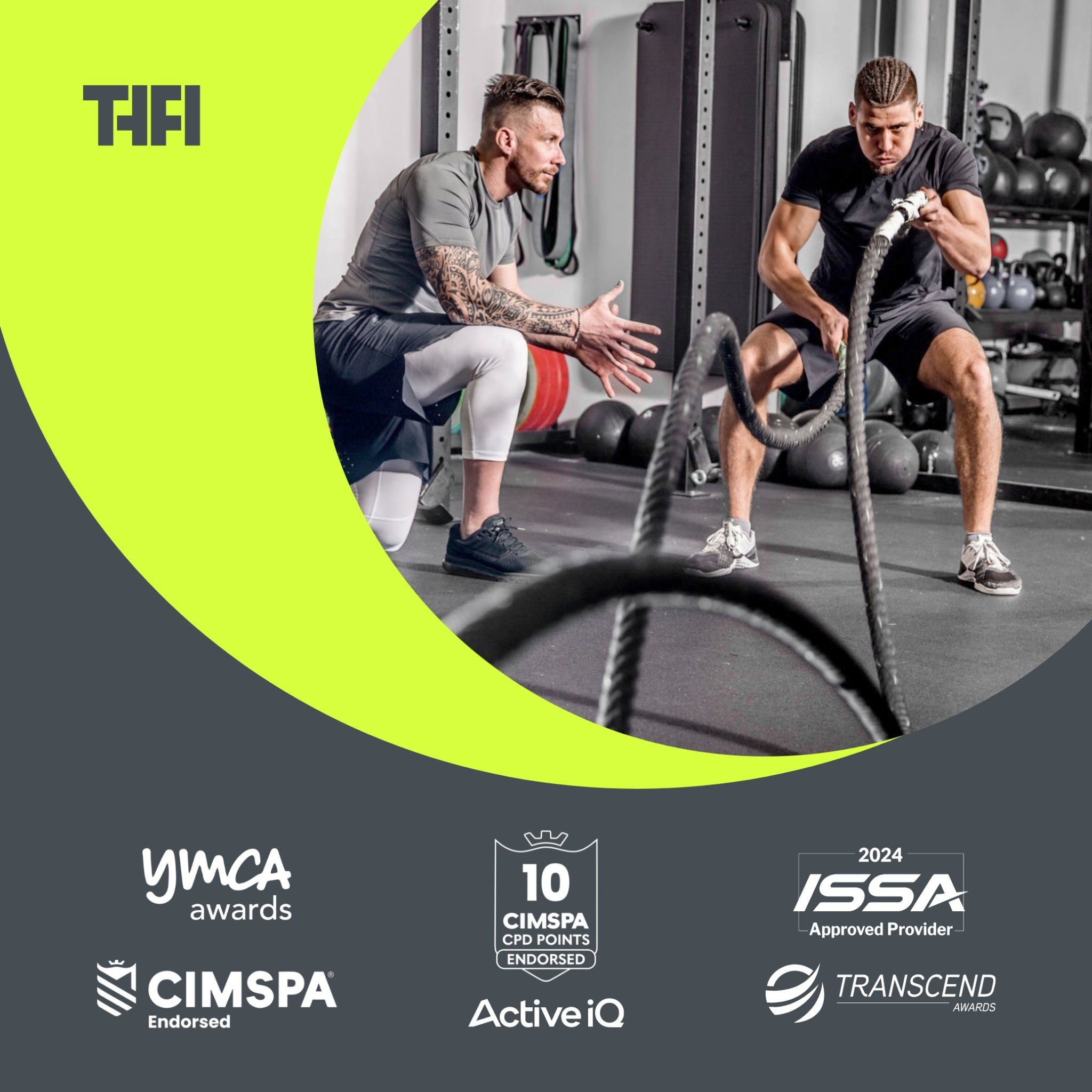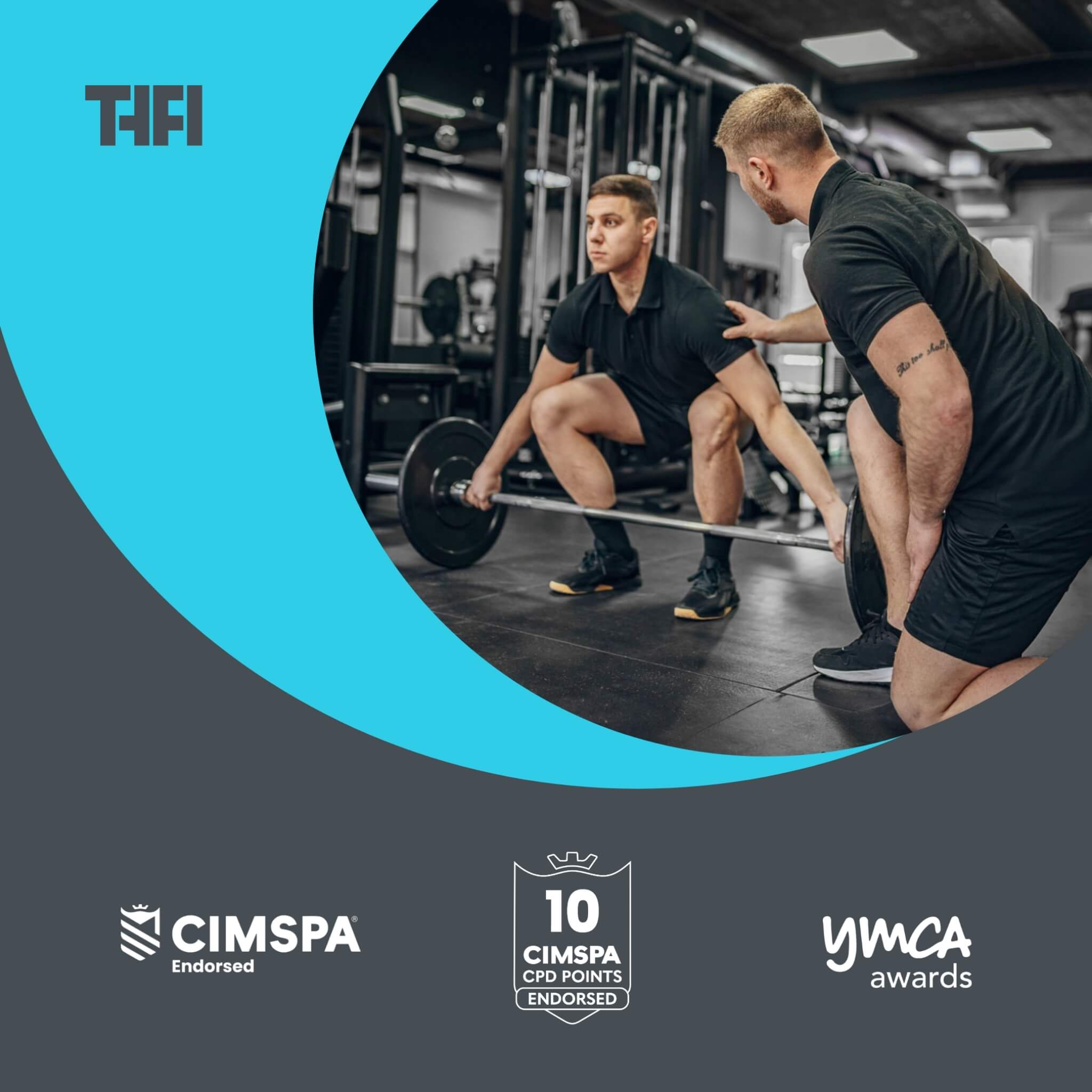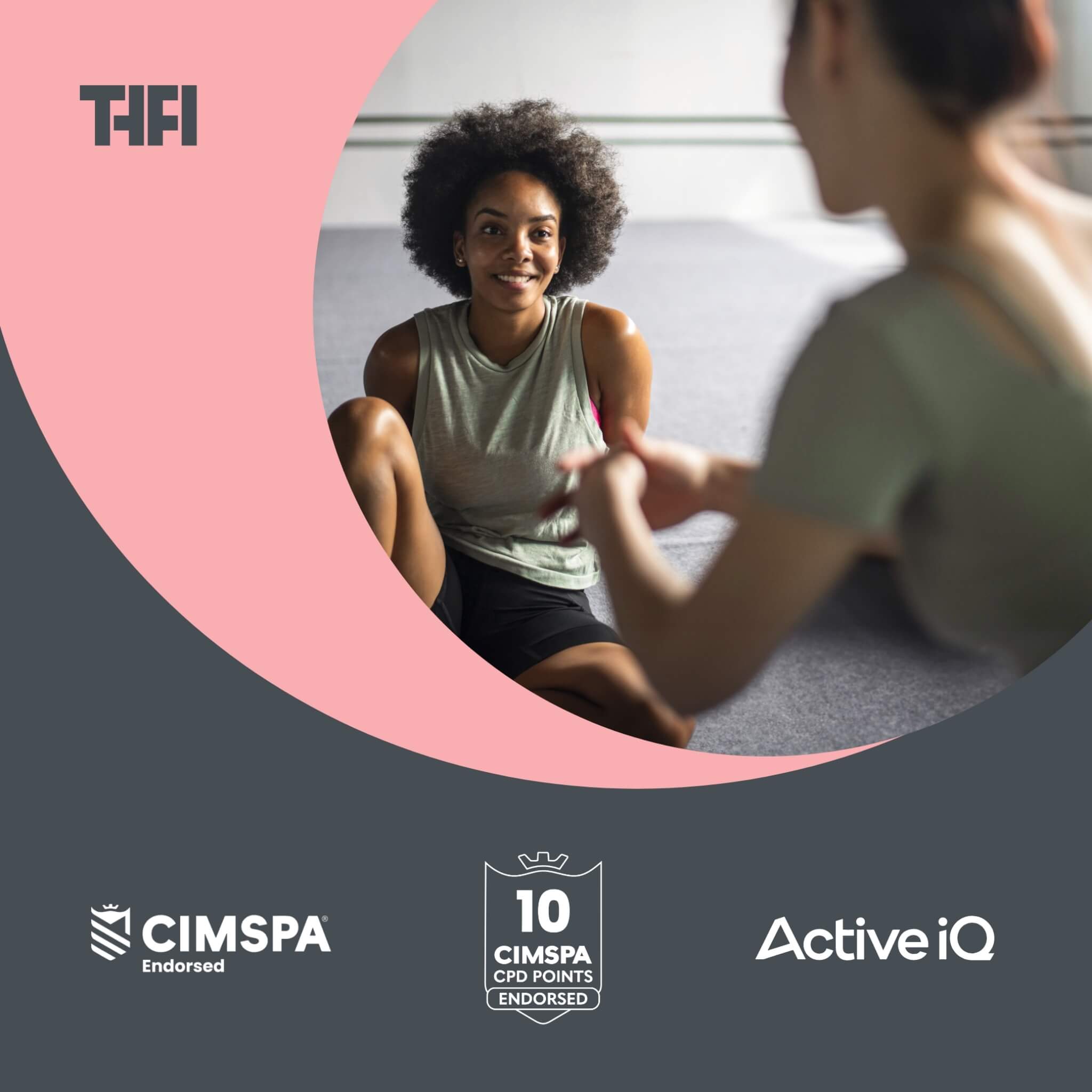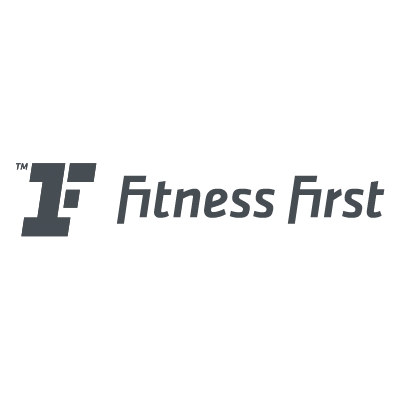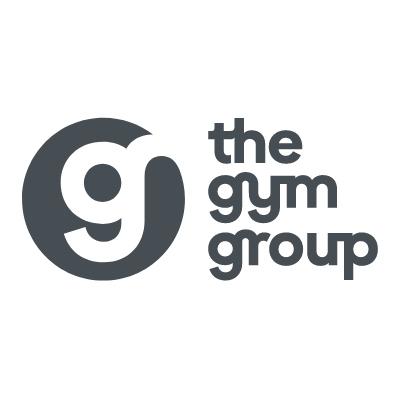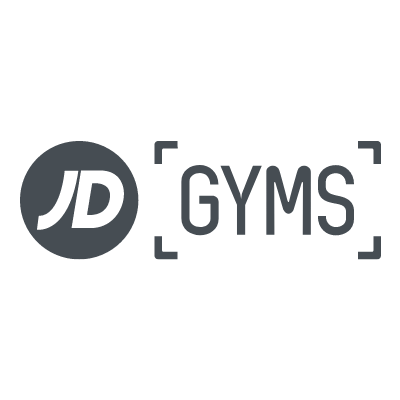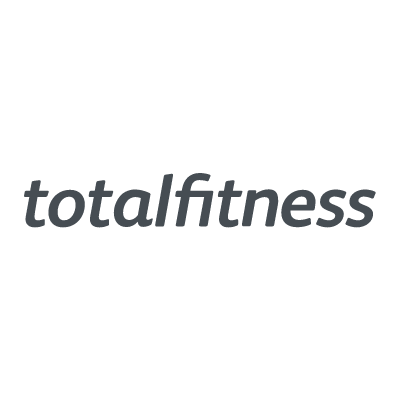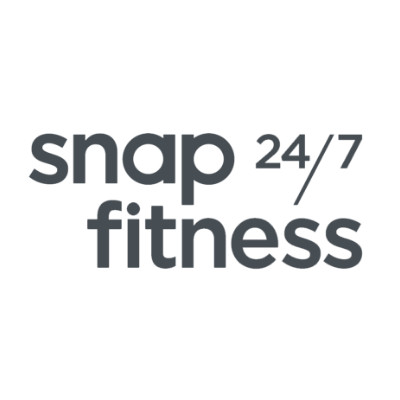10 Ways To Maximise Your Earnings As a Personal Trainer

Do you feel like you’re putting in countless hours of hard work as a personal trainer, but not earning the kind of money other PTs are?
Many trainers find themselves stuck in a cycle of working long hours without seeing the financial rewards they deserve.
It’s a competitive game...and simply being good at what you do isn't enough.
It’s not about working harder...but working smarter. And mastering the business side of the PT industry is what’s going to get more money flowing in so you can really thrive.
This includes everything from building a strong personal brand and offering a diverse range of services to setting competitive pricing and developing passive income streams. Not forgetting choosing the best PT qualification, always learning and becoming a master personal trainer with a level 4 personal trainer course.
This article is your guide to overcoming these challenges and unlocking your earning potential. We will delve into three key areas:
Building your brand: Learn how to define your unique selling proposition (USP) and establish a compelling online presence to stand out from your competitors.
Offering a range of services: Discover how diversifying your training options and upselling to existing clients can significantly increase your revenue.
Creating passive income streams: Explore strategies for developing digital products and leveraging affiliate marketing to generate income without the constraints of time and location.
This article will give you actionable insight that you can use straight away to earn more and build a stronger personal training business for you and your clientele...
1. Build a strong personal brand
The personal training industry is ultra-competitive so building a strong personal brand is essential if you want to maximise your earning capacity. You only have to look at the likes of Joe Wicks and James Smith to see how a well-defined brand sets you apart from every other trainer and helps you attract a die-hard audience who resonate with your unique approach and values.
Define your unique selling proposition (USP)
Your unique selling proposition (USP) is what makes you different from every other personal trainer out there. It's the special touch that only you can offer. To define your USP, start by reflecting on your strengths and passions. Are you particularly skilled in rehabilitation training or bodybuilder prep? Do you have a knack for working with beginners or older adults? Perhaps you specialise in high-intensity interval training (HIIT) or yoga.
Next, consider what your clients need and how your skills meet those needs. Conduct surveys or informal interviews with your current clients to understand why they chose you and what they value most about your sessions. This feedback can provide valuable insights into your USP.
For example, if your clients appreciate your motivational style and personalised workout plans, your USP could be “providing bespoke fitness programmes that inspire and empower clients to achieve their personal best.” Clearly articulating your USP helps potential clients understand the unique benefits of training with you.
Establish an online presence
You need to have a strong online presence these days – it’s an absolute non-negotiable. Your online persona is often the first impression potential clients will have of you, your brand, your values, and what kind of service they can expect from you. Make sure these three fundamental pillars are in place:
Social media: Platforms like Instagram, Facebook, and LinkedIn are powerful tools for showcasing your expertise and engaging with your audience. Share client success stories (with their permission), workout tips, and behind-the-scenes glimpses into your training sessions. Consistency is key – post regularly and interact with your followers to build a loyal community.
Professional website: Your website is your digital business card. It should be visually appealing, easy to navigate, and informative. Include sections about your background, services, client testimonials, and contact information. Offering a blog with fitness tips and industry insights can also help establish you as a knowledgeable authority in your field.
Online reviews: Positive reviews and testimonials are invaluable – they act as powerful social proof to other prospective clients thinking about working with you. Encourage satisfied clients to leave reviews on platforms like Google My Business, Trustpilot, or your Facebook page. These reviews build trust and credibility, making new clients more likely to choose your services.
2. Offer a range of services
Expanding the range of services you offer can significantly boost your income. By catering to different client needs and preferences, you can attract a wider audience and increase your revenue streams.
Diversify your training options
Offering various training formats allows you to meet clients where they are, both physically and financially. Consider incorporating the following into your service offerings:
In-person sessions: These are the traditional one-on-one or small group sessions conducted at a gym, client's home, or outdoors. Personalised attention and immediate feedback are major benefits of in-person training, and if you’re delivering value, you can charge more.
Online training: Virtual training has surged in popularity, especially post-pandemic. Online sessions via Zoom or other platforms offer convenience and flexibility for clients who cannot meet in person. Additionally, creating pre-recorded workout videos or full-length courses can provide a passive income stream.
Group sessions: Group training is an excellent way to maximise your time and income. You can charge slightly less per person than for one-on-one sessions, but with multiple participants, your overall earnings can increase. Group sessions also foster a sense of community and accountability among clients.
Specialised programmes: Develop niche programmes that target specific goals or populations, such as weight loss boot camps, prenatal fitness classes, or sports-specific training for athletes. Specialised programmes can command higher prices and attract clients looking for tailored solutions.
Upsell and cross-sell
Maximising your earnings isn't just about attracting new clients – it's also about providing more value to your existing clients. Upselling and cross-selling are effective strategies to achieve this.
Upsell: Encourage clients to purchase higher-end packages or add-ons. For instance, if a client is booking a basic training package, suggest an upgraded package that includes nutritional coaching, additional sessions, or personalised workout plans. Highlight the additional benefits they will receive, such as faster results or more comprehensive support.
Cross-sell: Offer complementary products or services that enhance the client's training experience. This could include fitness equipment, branded merchandise, or supplements. Partnering with reputable brands for these products can also provide you with affiliate income.
3. Invest in continued education
Staying ahead in the personal training industry requires a commitment to continuous learning. By investing in your education, you not only enhance your skills but also increase your value to clients, allowing you to charge higher rates and attract a more diverse clientele.
Get certified in specialisations
Investing in further education to gain extra certifications or advanced training will significantly boost your credibility and expertise.
You might want to consider pursuing specialisations in areas such as nutrition, rehabilitation, or specific fitness techniques like Pilates or kettlebell training. These certifications not only expand your knowledge but also enable you to offer specialised services that can attract clients seeking targeted expertise.
For instance, a certification in sports nutrition allows you to provide comprehensive dietary advice – something that will complement the training programs you’re creating for your clients, and help them achieve better results.
Advanced training in areas like corrective exercise can help you work more effectively with clients recovering from injuries – and a broader client base only increase your potential to earn more.
Attend workshops and seminars
Workshops and seminars are excellent opportunities to stay updated with the latest industry trends and innovations. They also provide valuable networking opportunities, allowing you to connect with other fitness professionals, share knowledge, and establish potential partnerships.
It’s a great way to stay current and can introduce you to new training methods, cutting-edge fitness technology, or fresh insights into business or marketing strategies. Not to mention that being active at industry events positions you as an established professional.
4. Set competitive pricing
Don’t undersell yourself. Setting the right price for your services is crucial for attracting clients and maximising your earnings. Competitive pricing involves understanding your market and aligning your rates with the value you provide.
Research your market
Start by researching the rates of other personal trainers in your area. Look at trainers with similar experience and qualifications to get a sense of the going rate where you live or work. Consider factors such as location, target demographic, and the types of services offered. This research will help you set a baseline for your pricing and ensure you remain competitive without undervaluing your services.
Online platforms, local gyms, and professional networks can be good sources of information for understanding market rates. By staying informed about what other trainers are charging, you can position your services more strategically within the market.
Value-based pricing
Instead of simply matching your competitors' prices, consider adopting a value-based pricing strategy. This approach involves setting your rates based on the unique value you provide to clients. Highlight the specific benefits and results your clients can expect from your training, such as personalised programmes, specialised expertise, and proven results.
For example, if you offer a comprehensive fitness package that includes personalised workout plans, nutritional guidance, and regular progress assessments, you can justify a higher price point. Emphasising the value of these additional services helps clients understand the worth of your training, making them more willing to invest in their fitness journey with you.
5. Develop a client retention strategy
Retaining the clients you already work with is often more cost-effective and profitable than constantly seeking out new ones. The time, effort, and cost is always going to be much less. By developing a strong client retention strategy, you can build long-term relationships, ensure steady income, and foster a loyal client base that may refer others to your services.
Personalise your service
Clients appreciate when their unique needs and preferences are taken into account. Tailoring your programmes to meet individual client goals not only enhances their experience but also increases their commitment to your services. Conduct regular assessments to track progress and adjust workouts as needed, showing clients that you are dedicated to their success.
Additionally, consider offering personalised touches such as customised workout plans, nutritional advice based on individual dietary preferences, and flexible scheduling options.
Clients are much more likely to stay with you long-term if they can see your dedication and the value of your service.
Regularly check in with clients
Maintaining regular communication with your clients fosters strong relationships that last. Schedule periodic check-ins to discuss their progress, address any concerns, and make necessary adjustments to their training plans. These interactions show clients that you care about their journey and are invested in their success.
Follow-ups can be as simple as a quick phone call, an email, or a brief conversation before or after sessions. Additionally, seeking feedback from clients helps you identify areas for improvement and shows that you value their input. By staying engaged and responsive, you build trust and loyalty, encouraging clients to continue their training with you.
6. Utilise marketing and advertising
Effective marketing and advertising are the main levers for attracting new clients and growing your personal training business. With a strategy in place to promote yourself and your business, you can reach a wider audience and build a strong client base to keep the money rolling in.
Leverage social media marketing
Social media platforms like Instagram, Facebook, and LinkedIn are powerful tools for promoting your personal training services. Here are some tips for effective social media marketing:
Instagram: Use Instagram to showcase your training sessions, client transformations, and fitness tips. Create engaging content such as short workout videos, motivational posts, and behind-the-scenes glimpses into your training routine. Utilise hashtags relevant to fitness and wellness to increase your visibility. Engage with your followers by responding to comments and messages promptly.
Facebook: Create a professional Facebook page where you can share updates, client testimonials, and special offers. Join local community groups and fitness-related forums to connect with potential clients. Use Facebook Ads to target specific demographics in your area, ensuring your promotions reach the right audience.
LinkedIn: LinkedIn is an excellent platform for building professional relationships and showcasing your expertise. Share articles, blog posts, and industry insights to establish yourself as a knowledgeable authority in the fitness industry. Connect with other professionals, such as gym owners and wellness coaches, to expand your network.
Local advertising
In addition to online marketing, local advertising can significantly boost your visibility within your community. Here are some benefits of community involvement and local partnerships:
Community involvement: Participate in local events, such as health fairs, charity runs, and fitness challenges. Offer free workshops or group training sessions to showcase your expertise and attract potential clients. Being active in your community helps build your reputation and fosters trust among local residents.
Local partnerships: Collaborate with local businesses such as gyms, health food shops, and wellness centres. For example, you could offer exclusive discounts to members of a local gym or host joint events with a health food retailers. These partnerships can provide mutual benefits and introduce your services to a broader audience.
7. Network and collaborate
Building a strong professional network is crucial for growing your personal training business. By partnering with local businesses and attending industry events, you can expand your reach and gain valuable insights.
Partner with local businesses
Collaborating with local businesses can create new opportunities for growth. Here are some potential partnerships:
Gyms: Partner with local gyms to offer your training services to their members. You could negotiate a referral programme where the gym recommends your services to their clients in exchange for a commission. Alternatively, you could offer group training sessions or specialised workshops at the gym.
Health food shops: Work with health food shops to provide nutritional advice and promote healthy eating. You could offer joint promotions, such as discounts on supplements for your clients or host in-store workshops on nutrition and fitness.
Other fitness professionals: Collaborate with other fitness professionals, such as yoga instructors, physiotherapists, or massage therapists. Cross-referrals can benefit all parties involved and provide your clients with a comprehensive wellness experience.
Attend industry events
Industry events like trade shows, fitness conventions, and workshops are excellent opportunities to network and stay updated with the latest trends. Here’s how attending these events can benefit you:
Building relationships: Meeting other fitness professionals and industry experts can lead to valuable connections and potential collaborations. Networking at these events can also help you learn about new business opportunities and best practices.
Staying updated: Industry events often feature seminars and workshops on the latest fitness trends, techniques, and technologies. Attending these sessions can help you stay ahead of the curve and continuously improve your services.
8. Track and analyse your performance
Regularly tracking and analysing your performance is essential for the growth and success of your personal training business. By utilising fitness apps and tools and reviewing your business metrics, you can make informed decisions and continuously improve your services.
Use fitness apps and tools
Technology can greatly enhance your ability to track client progress and deliver the highest-quality service possible. Here’s how you can use fitness apps and tools effectively:
Client progress tracking: Use fitness apps to monitor your clients’ progress, set goals, and adjust their training programmes accordingly. Apps like MyFitnessPal, Trainerize, and Fitbit allow you to track workouts, nutrition, and overall fitness levels, providing valuable data to tailor your training sessions.
Communication and scheduling: Apps like Zoom, Skype, or Google Calendar can help you manage appointments, conduct virtual training sessions, and stay in touch with clients. These tools streamline communication and ensure you stay organised.
Regularly review your business metrics
Assessing your business performance regularly is crucial for identifying areas of improvement and making strategic decisions. Here’s why it matters:
Financial performance: Track your income, expenses, and profitability to understand your financial health. Use this information to set financial goals, manage costs, and identify opportunities to increase revenue.
Client satisfaction: Collect feedback from your clients to gauge their satisfaction with your services. Surveys, reviews, and direct conversations can provide insights into what you’re doing well and where you can improve. High client satisfaction leads to better retention and more referrals...all money in the bank for you.
9. Create a client referral programme
Word-of-mouth is one of the most powerful marketing tools available to personal trainers. And it costs you nothing! A well-designed client referral programme can help you tap into this resource, turning your satisfied clients into ambassadors for your business...saving you on advertising and marketing, and putting money in your pocket.
Incentivise referrals
To encourage your clients to refer friends and family, offer incentives such as discounts or free sessions. Here are some strategies to implement:
Discounts: Offer a percentage off their next purchase or a discounted package rate for each successful referral. For example, you could give a 10% discount on their next month’s training fees for every new client they bring in.
Free sessions: Provide a free training session for both the referrer and the new client. This not only rewards your current clients but also gives the new client a taste of your services, increasing the likelihood they’ll commit to a long-term programme.
Exclusive perks: Consider creating a tiered referral programme where clients can earn additional benefits, such as exclusive access to special events or premium content, as they refer more people. This adds an element of gamification and can motivate clients to refer more frequently.
Encourage reviews and testimonials
Positive reviews and testimonials are essential for building credibility and attracting new clients. Encourage your satisfied clients to share their experiences. Here’s how:
Request feedback: After a successful session or upon reaching a milestone, ask your clients to leave a review on your website, Google My Business, or social media pages. Make it easy for them by providing direct links and instructions. You can even set up email automations to go to clients and prompt them to leave a review automatically.
Share testimonials: Highlight positive testimonials on your website and social media platforms. Use client quotes, before-and-after photos (with permission, of course), and video testimonials to showcase the success stories you’ve helped clients achieve. This authentic content builds trust and showcases the real impact of your training.
Incentivise reviews: Just like referrals, offering small incentives for leaving reviews can be effective. Consider a monthly draw for a free session or a discount for clients who provide feedback.
10. Develop passive income streams
Diversifying your income through passive income streams can provide financial stability and increase your overall earnings. Here are some strategies to develop passive income within the personal training industry.
Create digital products
Digital products like e-books, workout plans, and online courses allow you to reach a broader audience and generate income without the constraints of time and location. Here’s how to get started:
E-books: Write and sell e-books on topics such as nutrition, fitness tips, or specific workout routines. There are always new emerging fitness trends or diets you can write about and create an e-book. These can be sold on your website or through platforms like Amazon Kindle. Ensure the content is valuable, well-researched, and professionally presented.
Workout plans: Develop downloadable workout plans tailored to different fitness levels and goals. These plans can be sold individually or as part of a subscription service. Offer variations such as home workouts, gym routines, or specialised programmes like HIIT or strength training.
Online courses: Create comprehensive online courses that clients can follow at their own pace. These could include video tutorials, interactive lessons, and downloadable resources. Platforms like Udemy or Teachable make it easy to host and sell your courses.
Affiliate marketing and sponsorships
Partnering with fitness brands can provide additional income through affiliate marketing and sponsorships. Here’s how to leverage these opportunities:
Affiliate marketing: Promote fitness products or services that you genuinely believe in and use. Sign up for affiliate programmes with companies like Amazon, or specific fitness brands. Share affiliate links on your website, blog, or social media. When your followers make a purchase through these links, you earn a commission.
Sponsorships: Collaborate with fitness brands for sponsorship deals. This could involve promoting their products in exchange for free gear, monetary compensation, or both. Ensure that any sponsored content aligns with your brand and provides value to your audience.
Product reviews and endorsements: Write honest reviews or create content around the products you endorse. Transparency is key – always disclose your affiliate relationships to maintain trust with your audience.







